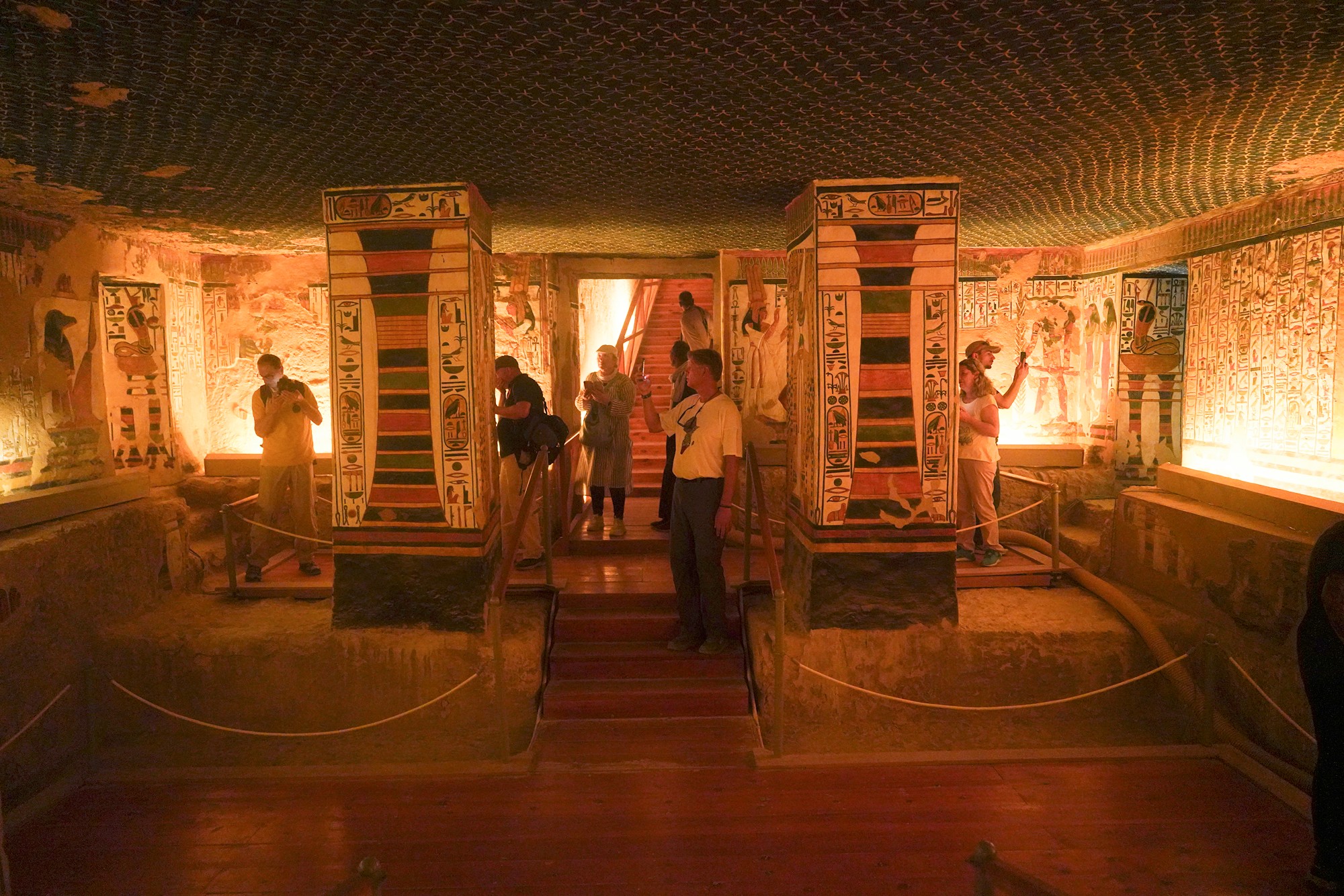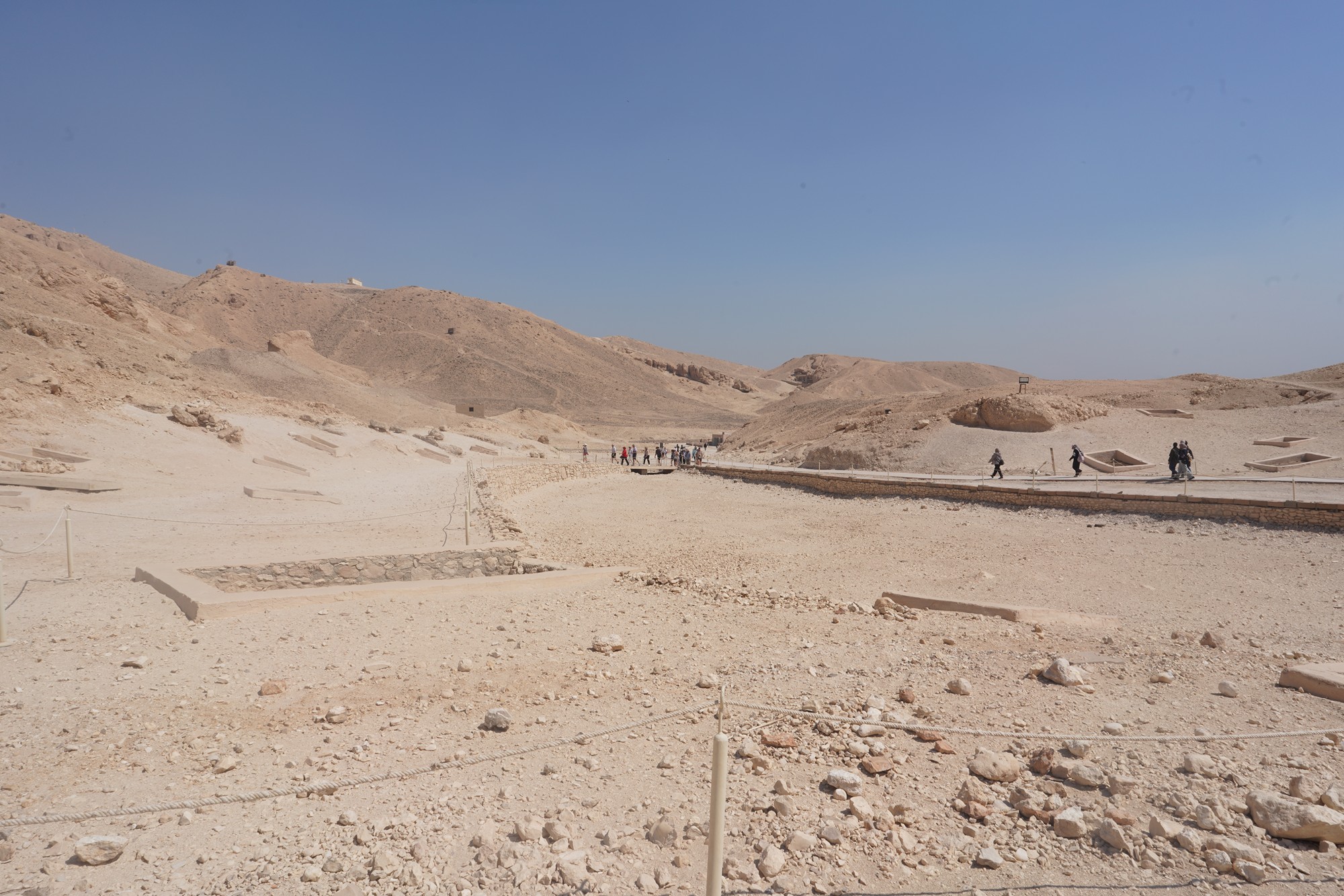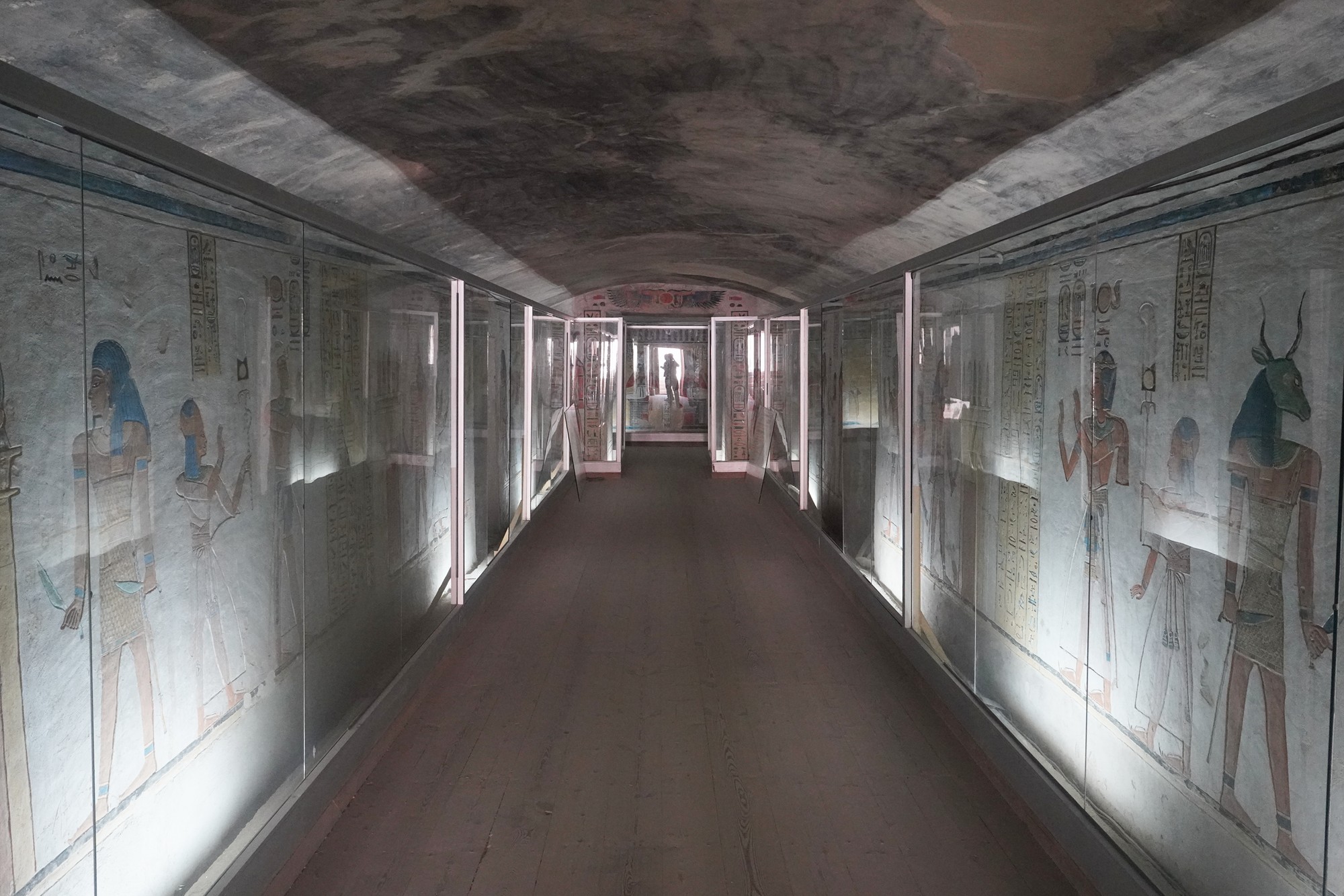Valley of the Queens, Luxor, Egypt
The Valley of the Queens served as the burial site for many queens, princesses, and other high-ranking members of the royal family during the New Kingdom period (1550–1070 BCE) of ancient Egypt. 841
Valley of the Queens: PHHV+C5M, Luxor, Luxor Governorate 1340410, Egypt
Date Picture Taken: February, 2024
After visiting the Valley of the Kings and the Temple d’Amon (Médinet Habu), I came to the Valley of the Queens, which is close to the Temple of Medinet Habu. As the pictures below show, it is not as well developed as the Valley of the Kings and does not attract many visitors.

Four tombs were opened for visitors, and the general ticket is good for three tombs. One tomb is for Queen Nefertari, and it is an extra-ticket tomb.
Even though it is named the Valley of the Queens, two tombs opened for visitors were for the Prince.



The tombs of Queen Nefertari, the beloved wife of Pharaoh Ramses II

One of the most well-known tombs in the Valley of the Queens is that of Queen Nefertari, the beloved wife of Pharaoh Ramses II. Her tomb is renowned for its exquisite wall paintings and intricate decorations. The valley contains numerous other tombs, each with its own historical and artistic significance.



Queen Nefertari was one of the most prominent queens of ancient Egypt and the favorite wife of Pharaoh Ramses II (Ramses the Great). She lived during the 13th century BCE, in the New Kingdom period. Nefertari’s name means “Beautiful Companion,” reflecting her high status and the pharaoh’s deep affection for her.

The ticket to the tomb of Queen Nefertari is also the most expensive tomb to enter, as I paid about 65 dollars. It is also the only timed tomb in Luxor, allowing only 10 minutes in.
As I entered the tomb


A small room on the right

Walked downstairs

Wall paintings at the stairs



Into the main room of the tomb. This is rather a small tomb.

The front side

The left side


Spanning left to right at the rear left corner



Spanning right to left from the rear right corner



Back to the rear center, looked at the front side

Spanning left to right from the rear center



The center front. There is a room which could be where the coffin was located.

The front right corner


From the front looking at the rear

Painting on the front right column


Painting on the front left column

Looking at the back side from the front again

The left side wall



The right side wall


Looked at the front side from the back

Exiting the tomb

Paintings on the wall near the stairs



A small room on the right side near the entrance of the tomb

The paintings in this room are well preserved.








I walked out from Queen Nefertari’s tomb and proceeded to see three other tombs



Prince Khaemwaset, also known as Khaemweset or Khaemwaset, was an important figure in ancient Egyptian history. He was a son of Pharaoh Ramses II and Queen Isetnofret. Khaemwaset lived during the 19th Dynasty of the New Kingdom period, around the 13th century BCE.

Unlike other tombs I have visited so far, this one has glass covering the wall.











Queen Titi was royalty in the 20th Dynasty, but little is known about her apart from holding the title of queen. Her tomb is smaller in scale than many royal tombs, and it was severely damaged by later reuse. Three side chambers were designed to hold her burial goods and show scenes of her before various gods.







The tomb of Amunherkhepshef, son of Ramesses III: Amunherkhepshef’s tomb (QV55) has wall decorations showing religious ceremonies and military processions.











